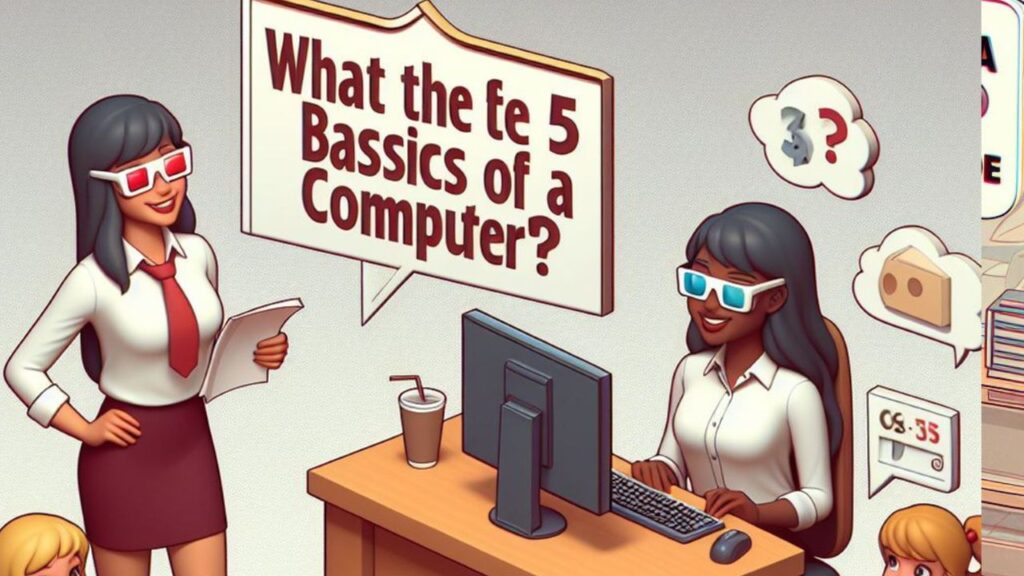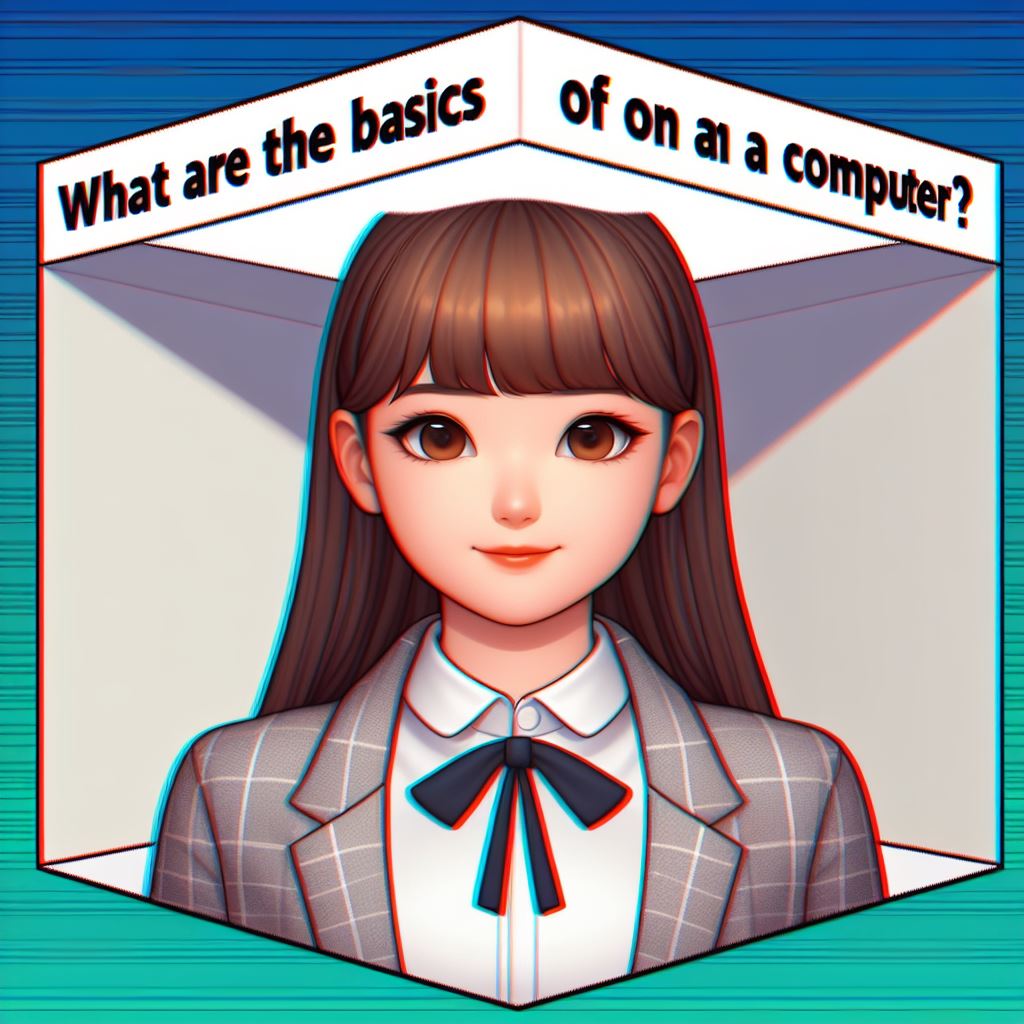
What is a Computer System? | 0186
The PC has turned into an imperative apparatus in our lives. From work and training to amusement and correspondence, it supports quite a bit of what we do. In any case, how precisely does this apparently complicated machine work? The response lies in five principal building blocks that cooperate consistently. In this blog entry, we’ll dive into these five nuts and bolts of a PC, making sense of their jobs and how they add to the general usefulness of the framework.
1. Equipment: The Actual Establishment
Envision a PC as a perfectly orchestrated symphony. The equipment is the actual design that houses every one of the fundamental parts. It’s the unmistakable part you can see and contact, comprising of the accompanying:
- Focal Handling Unit (CPU): Frequently alluded to as the “cerebrum” of the PC, the computer processor is answerable for handling directions and information. It completes computations, simply decides, and regulates the whole framework’s activity. The computer chip has two primary sub-parts:
- Number-crunching Rationale Unit (ALU): This unit performs numerical activities like expansion, deduction, augmentation, and division. It’s the workhorse answerable for the crude computations.
- Control Unit (CU): The CU goes about as the guide, getting guidelines from memory, translating them, and guiding other equipment parts to execute them.
- Memory (Smash and ROM): Consider memory the PC’s present moment and long haul stockpiling.
- Irregular Access Memory (RAM): This is the PC’s dynamic work area, holding information and guidelines right now being utilized by the central processor. Smash is unstable, meaning information is lost when the PC is switched off.
- Peruse Just Memory (ROM): This sort of memory stores extremely durable information fundamental for the PC to work, like the startup guidelines (Profiles). ROM is non-unstable, meaning information continues even after power is off.
- Capacity Devices: These parts give long haul stockpiling to information and projects not right now being used. Normal capacity gadgets include:
- Hard Circle Drive (HDD): A conventional stockpiling gadget utilizing attractive platters to store information. HDDs offer huge limits however are more slow than fresher choices.
- Strong State Drive (SSD): SSDs utilize streak memory chips for capacity, offering quicker read/compose speeds contrasted with HDDs. Notwithstanding, they are for the most part more costly for a similar limit.
- Input Devices: These are the apparatuses used to take care of data and guidelines into the PC. Models include:
- Console
- Mouse
- Scanner
- Webcam
- Mouthpiece
- Yield Devices: These parts show the handled data produced by the PC. Normal models include:
- Screen
- Printer
- Speakers
These equipment parts cooperate genuinely. The central processor dwells inside the PC case, associated with memory and capacity gadgets through an organization of links and circuits. Information and result gadgets are connected to assigned ports looking into the issue, considering cooperation with the client.

2. Programming: The Minds Behind the Activity
While equipment gives the actual establishment, programming is the elusive arrangement of guidelines that instructs the equipment. It’s the working framework (operating system) and the different projects that give life to the PC and permit clients to perform errands. Here is a breakdown of the two fundamental programming classifications:
- Working Framework (OS): The operating system goes about as the middle person between the equipment and the client. It deals with the PC’s assets, like memory and capacity, and gives a stage to running applications. Well known working frameworks incorporate Windows, macOS, Linux, Android, and iOS.
- Applications (Apps): These are the projects clients communicate with to perform explicit undertakings. Models incorporate internet browsers for riding the web, word processors for making reports, and games for amusement.
Programming is put away on stockpiling gadgets like the HDD or SSD. At the point when a client dispatches an application, the operating system recovers the program’s directions and burdens them into memory (Smash) for the computer chip to process.
3. Input: Taking care of the Machine
Envision a discussion. Input gadgets resemble your voice, taking care of guidelines and information to the PC. These gadgets convert genuine data into a computerized design that the PC can comprehend. This is the way a few normal information gadgets capability:
- Keyboard: Composing on a console makes an interpretation of key presses into electrical signs that the PC deciphers as letters and images.
- Mouse: Moving the mouse produces signals comparing to cursor development on the screen. Clicking and hauling activities further give contribution to choosing things or controlling articles.
- Scanner: This gadget catches actual records or pictures and digitizes them for capacity or handling by the PC.
- Webcam: A webcam catches video and converts it into a computerized transfer, empowering video conferencing or ongoing applications
(Proceeded) What Are the 5 Essentials of a PC?

4. Handling: The Center Capability
Handling is the core of the PC’s activity. This is where the wizardry occurs – the central processor becomes the dominant focal point, using the product directions and information got through input gadgets to perform different assignments. Here is a more intensive gander at the handling cycle:
- Fetching: The Control Unit (CU) recovers directions from memory (Slam) each in turn.
- Decoding: The CU deciphers the recovered guidance, understanding what activity should be performed.
- Executing: In light of the decoded guidance, the CU coordinates the ALU to execute the essential numerical or legitimate procedure on the information (likewise recovered from memory).
- Storing: The consequences of the activity are then put away back in memory for sometime in the future or result.
This get translate execute-store cycle happens a great many times each second, empowering the PC to proficiently deal with complex errands. The speed and execution of the central processor fundamentally influence the general handling force of the PC.
5. Yield: Introducing the Outcomes
The last move toward the PC’s activity is introducing the handled data to the client. Yield gadgets decipher the computerized information back into a human-justifiable configuration. Here are a few instances of how yield gadgets capability:
- Monitor: This showcases visual data like text, pictures, and recordings created by the PC. Present day screens use pixels (little shaded spots) to make the picture on the screen.
- Printer: Printers make an interpretation of advanced information into actual archives or pictures on paper. Different printer advancements like inkjet and laser printers accomplish this utilizing different systems.
- Speakers: Speakers convert advanced sound information into sound waves, permitting clients to hear music, voice messages, and other sound result from the PC.
The sort of result gadget utilized relies upon the ideal result. For example, you could utilize a printer to make an actual duplicate of a report, while a screen is more qualified for survey computerized content.
Assembling everything: The Ensemble of a PC
These five major parts – equipment, programming, info, handling, and result – work as a lovely, unified whole to make a PC capability. Envision a symphony. The equipment instruments are the actual parts, each assuming a particular part. The product is the printed music, directing the notes and beat for the instruments to follow. The information gadgets resemble the guide’s twirly doo, starting the exhibition. The handling is the demonstration of playing the music, deciphering the notes and delivering sound. At long last, the result is the actual music, arriving at the crowd’s ears.
Understanding these essential structure blocks engages you to see the value in the intricacy and creativity behind even the most straightforward PC assignments. From sending an email to altering a photograph, each activity depends on this consistent coordinated effort among equipment and programming, learning, handling it, and conveying brings about a way people can comprehend and interface with.
This blog entry has given an establishment to grasping the basics of a PC. As you dive further into the universe of innovation, you’ll experience more unambiguous terms and ideas, however these five points of support will constantly stay the center rules that make processing conceivable.

